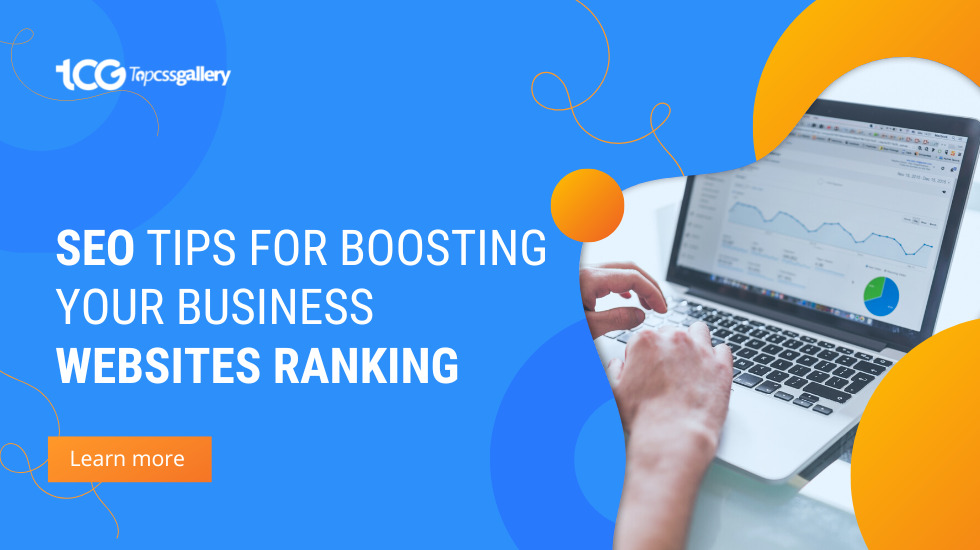Are you struggling with your website’s ranking on search engines and looking for effective SEO tips that will grow your business websites?
If yes, then you need to read this blog right now.
Search Engine Optimization can be an integral part of your marketing strategy, helping your website and your business get found online. By following these practices, you can organically gain a good ranking on SERPs. This ranking can improve your website’s visibility, which means you get huge traffic on your site.
With this in mind, we have put together the 7 most effective SEO tips that will help get your business website crawled, indexed, and a better ranking, to generate more organic traffic to your site.
7 SEO Tips to Boost your Business Sites’ Ranking
These SEO tips are essential to the Search Engine Optimization strategy. You need to implement every step from this to ensure you get a high ranking on the site.
Do keyword and topic research
Keyword research is an important part of any SEO plan because it is perhaps the ideal way to determine your clients’ thoughts. If you are just guessing what your audience is looking for, you could invest a lot of energy trying to rank for some unacceptable things.
Keyword research will show you what people are searching for on the web in terms of the specific phrases they use and the kinds of topics they are interested in and concerned about.
Various tools can help you here. First and foremost, it’s Google’s Keyword Tool, which pulls the search terms most frequently used by individuals directly from Google data.
Although the data is designed for individuals who use Google Ads for pay-per-click advertising, it is also valuable for individuals to arrange their SEO techniques.
You can enter keywords related to your business that you’ve created into the tool and get back a significantly larger view of related terms. Also, enter the keywords you are interested in to see how they think about traffic and rivalry levels.
You can also use various paid tools like Moz Keyword Explorer and SEMRush to get much more specific keyword data and help you sort out the phrases and ideas that come to mind as you research.
Use On-Site Optimization
Fortunately, this is probably the least challenging piece of the SEO puzzle. For each page on your site, you have different places in your HTML that you can optimize depending on the terms you expect to connect to:
URL
The URL of the page should reflect the essence of the page and contain the keyword you need to rank for the most. For example, if you have a page focused on organic pet food, your URL might be something like www.companyname.com/organic-pet-food.
Title
Your headline descriptions should be used consistently to communicate what is on the page and incorporate your chosen keyword. This is beneficial for both your readers and your SEO.
Headings
Using headings in your content is a decent way to make your content more organized and meaningful. This also gives you more opportunities to add relevant keywords. Make use of these <h1>, <h2> and <h3> tags – when a search engine crawls your website looking for information, these tags have a big impact.
Alternate image tags
For every image you add to your website, you can add an alt tag, giving you extra space in the page’s HTML code to indicate what the page submits to search engines. Plus, it’s great for accessibility purposes, so not only does it increase organic traffic, but it’s also good for your users.
Image Titles
Before you upload an image to your site, take a moment to give it a title that uses your target keyword.
Meta description
Your metadata description won’t affect your position in the SERPs, but it will appear on the query page, which means it’s a great place to add additional information to get searchers to click once they find your site.
Make sure you have a well-structured website
Your website architecture is the way your website is organized. One smaller site might have a menu with five main classes and several pages included under each one. A larger site can have many categories and subcategories or a large number of individual pages. Both serve their purpose, and each may be suitable for one or the other business.
The more complex your site is, the more important it is to ensure that the user experience makes sense to your clients and to search engine algorithms. A good rule of thumb is to develop a layout that groups related pages together in classes, all while staying two or three clicks away from your home page.
So you don’t need the page to be in a classification that is a subcategory of a subcategory – you need to keep it simple. It is better to plan your site structure in advance when you are initially building your site.
But if you missed that boat, take a moment now to sit down and figure out your site’s user flow and see if it makes sense as it’s currently set up. If not, you’ll need to fix what’s there so your structure can contain all the new pages you add in the future and be optimized for SERPs.
Provide detailed information
While providing a service or product on your website, you need to add full detailed information about the service or product. Let’s suppose that you are offering products on your ecommerce website.
In that case, adding an item name or simply a description line doesn’t give you much opportunity to move toward web indexes. And that doesn’t shed much light on what’s worth buying to your potential client. This is another place where good SEO practices also make your customer’s life a little easier.
If you don’t already have them, add your product descriptions to give readers and search engines more information about what you sell and what it will do for your customer. This will give Google crawlers more information to process. And it will show your potential customers why they should buy from you, not the competition. So, it’s a win-win.
Create high-quality content
Content does a lot of work in your SEO process for a few basic reasons. Fresh content tells search engines that your website is current and cutting-edge because Google doesn’t want to rank some old website that hasn’t been updated for a long time and might be full of outdated information.
High-quality content allows you to start targeting a large number of long-tail keywords. These are easier to rank for, and the more you start ranking for long tail keywords, the stronger your site authority will be, helping you rank better for broader, more serious terms in the long run.
This part of SEO is difficult and requires time, money and planning. Still, you’ll have trouble getting anywhere without it. Start working on a content pipeline for your brand that answers your audience’s questions and includes the keywords you identified in your earlier analysis. Make sure the content you create is of high quality and provides information that is valuable to your audience.
Promote your content
These days, you have to take your content seriously to get it in front of the people you want to see it. So many different brands are investing in content that just creating your own great content isn’t enough. It’s a good start, but to get someone actually to read it, promotion is important. This can mean a lot of things.
This part is especially important if you are in the early stages of your content program. You are competing with brands that already have a foothold in a space you don’t, so you have to invest extra energy (and probably money) in getting those first supporters to like your content, and if they like it enough, it’ll amplify the signal to their networks.
Generating Backlinks
Backlinks are a basic SEO practice for any website. Getting links to your site from highly visited and highly respected external sites is not only good for you because visitors to these sites can follow the links.
It also serves as a sign to search engines that if the sites they trust also trust your site, so should Google. And that means you’ll end up higher on the SERPs.
When building backlinks, it is very important that the link is genuine and relevant to your business. If all your backlinks are just throwaway links, you could actually be penalized for trying to game the system.
You can start building backlinks for your website in a number of different ways, including creating infographics to use as reference points, hosting a registry, using question-and-answer sites like Quora, and much more.
Final Notes
No matter what your website does, it needs to attract attention if you rely on it selling for you. When people want to buy what you’re selling, your website has to do the heavy lifting and pull them in to initiate the sale. If it doesn’t work, it needs a facelift. Search engine optimization is the most direct line between a faltering eCommerce website and success.
Besides, if you want to see some amazing web design inspiration then you can explore the top web design gallery inspiration site, TopCSSGallery. This is the best place where professional web designers and developers can showcase their designs on the website. Want to learn more? Visit the site now.



